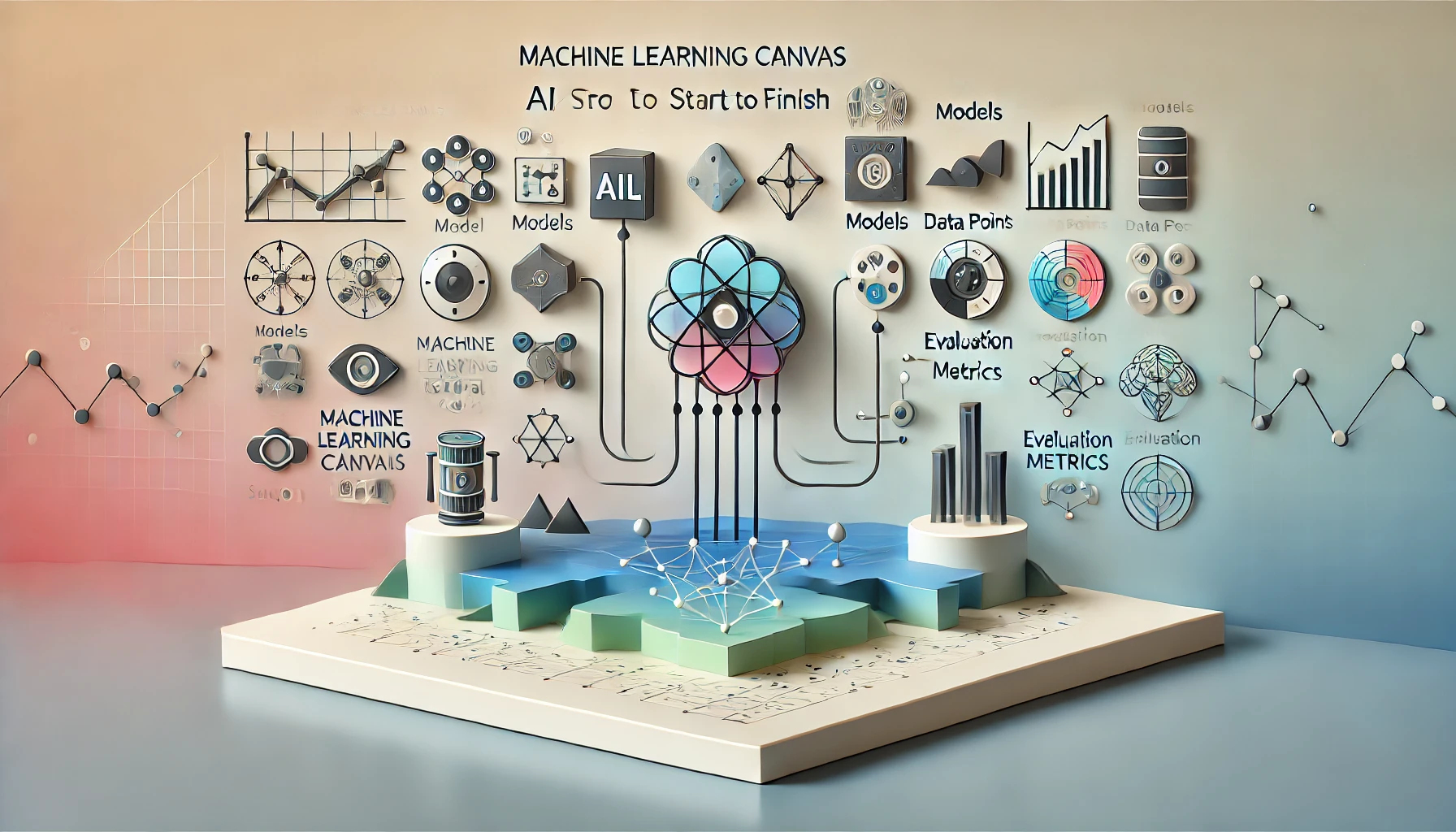Machine Learning Canvas: Structuring AI/ML Projects from Start to Finish
 Riya Bose
Riya Bose
Artificial intelligence and machine learning (AI/ML) projects can be incredibly powerful, but they also require careful planning, clear objectives, and well-structured execution. Without a systematic approach, it’s easy to get lost in the data and modeling processes. To solve this problem, a Machine Learning Canvas can be a game changer, helping to map out every aspect of your project, from data sources to model deployment and beyond.
In this blog, we’ll explore the 10 key components of a Machine Learning Canvas, providing examples and key questions to help you structure your AI/ML project effectively.
1. Value Proposition
Your machine learning project must have a clear purpose. The value proposition defines what benefit or solution your project will provide to the business or the end user.
Examples:
Predict customer churn to improve retention strategies.
Detect fraudulent transactions to reduce financial loss.
Provide personalized product recommendations to increase sales.
Key Questions:
What problem are you solving with AI/ML?
How does solving this problem benefit the user or organization?
2. Data Sources
Data is the fuel for any machine learning project. Identify where the data comes from and whether it's structured, unstructured, or real-time.
Examples:
Transaction logs, user behavior data, or sensor data.
Public datasets from Kaggle, APIs, or internal data warehouses.
Key Questions:
What types of data do you have access to?
What are the primary data sources, and how will you gather them?
3. Prediction Tasks
Machine learning is driven by prediction tasks such as classification, regression, or clustering. Clearly define what your model is predicting.
Examples:
Classifying emails as spam or not spam.
Predicting house prices or stock trends.
Grouping customers into distinct segments based on behavior.
Key Questions:
What is the output (categorical, continuous)?
Is this supervised, unsupervised, or reinforcement learning?
4. Feature Engineering
Feature engineering is the art of transforming raw data into meaningful features that improve the model's performance.
Examples:
Creating time-based features (day of the week).
Converting text data into numerical form using NLP (TF-IDF, embeddings).
Key Questions:
What features are crucial for your model?
How can you transform raw data into useful features?
5. Offline Evaluation
Before deploying your model, evaluate its performance on historical data using metrics like accuracy, precision, recall, and F1-score.
Examples:
Splitting data into training and testing sets.
Cross-validation and hyperparameter tuning for optimization.
Key Questions:
What evaluation metrics will you use?
How do you handle imbalanced data and prevent overfitting?
6. Decisions
Your model will drive decisions that impact your business or users. These decisions should be actionable and based on model predictions.
Examples:
Flagging high-risk financial transactions.
Suggesting personalized product offers based on behavior.
Key Questions:
How will predictions influence decision-making?
Are decisions automated, or do they require human intervention?
7. Collecting Data
Gathering and preparing data is a critical step in building any machine learning model. It includes ensuring data quality, handling missing values, and preparing for compliance and privacy.
Examples:
Setting up data pipelines to collect real-time data.
Handling outliers, noise, and inconsistencies in the data.
Key Questions:
How is data collected and securely stored?
What platforms or tools will you use for data preparation?
8. Building Models
This is the stage where you build, train, and tune your machine learning model. It involves choosing the right algorithm and optimizing for the best performance.
Examples:
Building a decision tree for classification tasks.
Training a neural network for image recognition.
Key Questions:
What algorithms will you use and why?
How will you optimize model performance?
9. Live Evaluation and Monitoring
Once your model is live, continuous evaluation is necessary to ensure its performance doesn’t degrade. You need to monitor the model in real time.
Examples:
Monitoring accuracy, latency, and failure rates.
Setting up alerts for model drift or performance issues.
Key Questions:
How will you evaluate the model in production?
What’s your plan for retraining or improving the model over time?
10. When Not to Implement AI/ML
Not all problems require AI or machine learning solutions. Sometimes, simpler rule-based systems are more appropriate.
Examples:
If the dataset is too small or noisy.
When the cost of AI implementation outweighs the benefits.
Key Questions:
Are simpler approaches (like rule-based systems) sufficient?
Can the problem be solved with business logic alone?
Conclusion
The Machine Learning Canvas provides a clear structure to guide your AI/ML project from inception to deployment. By answering key questions in each of the 10 sections, you can ensure that your project is well-planned, has a clear value proposition, and is executed efficiently. Whether you're building a recommendation engine, fraud detection model, or customer churn predictor, following this structure can help you stay on track.
Next Steps: If you're ready to start structuring your next AI/ML project, download our Machine Learning Canvas template and apply it to your use case. Happy building!
Subscribe to my newsletter
Read articles from Riya Bose directly inside your inbox. Subscribe to the newsletter, and don't miss out.
Written by
